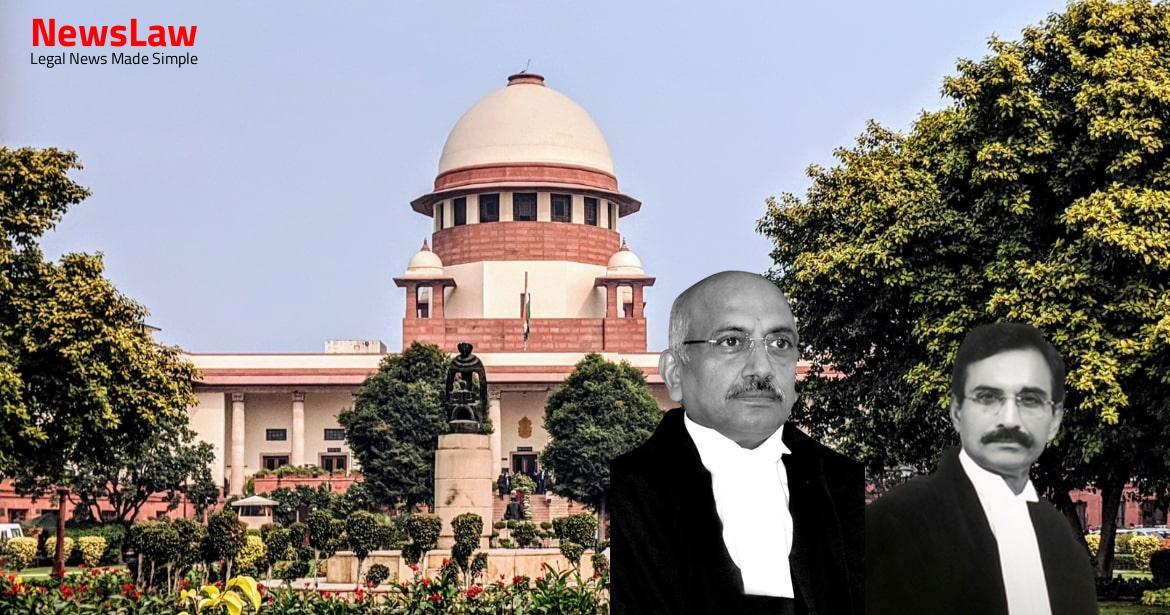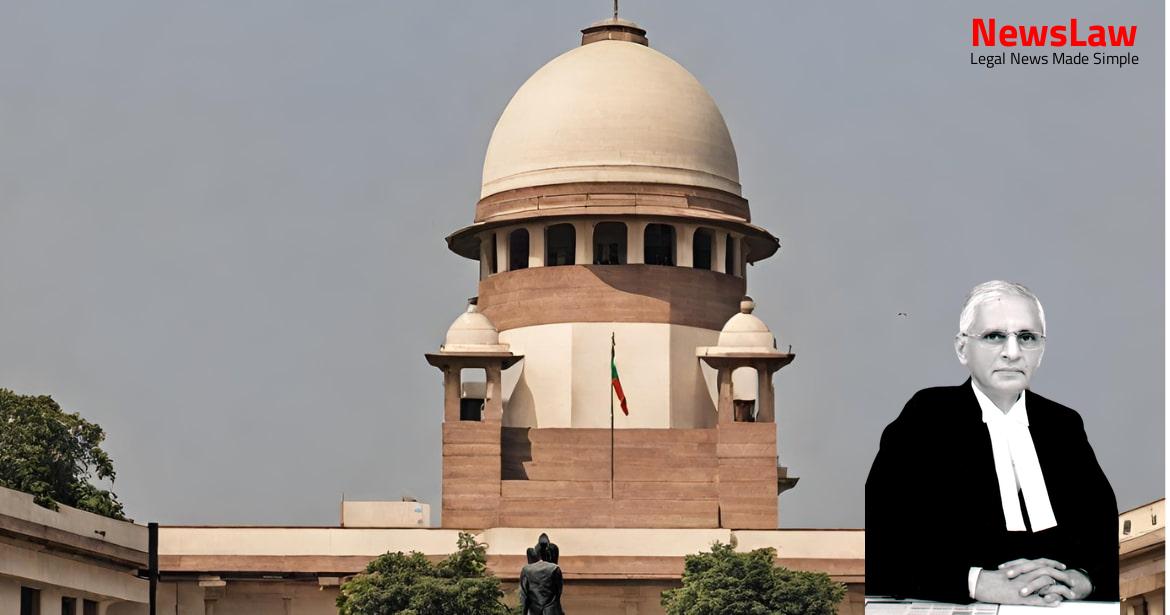In a significant legal battle over the ownership of Alagar Hills, the Supreme Court of India has issued a monumental verdict. The case, involving a dispute between the temple and the government, has finally reached a conclusion. Let’s delve into the details of the court’s decision and the key factors that influenced this crucial ruling.
Facts
- The devotees filed a suit claiming the entire forest area in Alagar Hills belongs to Lord Sri Arulmighu Kallalagar.
- The trial Court dismissed the suit for lack of evidence proving the temple’s ownership.
- The Appellant contended that Alagar Hills belong to the Government and were classified as reserved forest by a government notification.
- The Appellant sought a permanent injunction to protect underground water reserves in Alagar Hills.
- A proceeding from 1881 proposed to reserve 305.48 sq. miles in Madurai District, including Alagarmalai.
- The trial Court upheld the Government’s claim that Alagar Hills were declared a reserved forest in 1881.
- The Appellant argued that Notification No.187 of 11.10.1883 validated the reserved forest status of Alagar Hills.
- Appeals against the trial Court’s judgments were allowed by the High Court in 2003.
- The High Court directed the land in Alagar Hills designated as reserved forest to be given to the temple.
- The High Court observed that the Respondent-temple had been exercising acts of ownership over the suit hills for several centuries.
- The High Court held that adequate material was produced by the Respondent-temple to prove its title of the temple over Alagar Hills.
- The High Court held that the Respondent was entitled to succeed as the issue was substantially the same as in O.S. No.171 of 1987.
- The trial Court held that O.S. No.178 of 1982 is hit by res judicata as the issue was substantially the same as in O.S. No.171 of 1987.
- The Applications filed by the Respondent under Order 41 Rule 27 of the Civil Procedure Code, 1908 were allowed, and the documents produced by the Respondent were marked as Exhibit A-46 to A-56.
- The High Court observed that there was no order of reservation as contemplated in Section 25 of the Act.
- The High Court held that the suits were not barred by limitation as Section 10 of the Act would apply.
Also Read: Case of Technical Equipment Officer Appointment Criteria Dispute
Issue
- High Court framed questions regarding ownership of Azhagar Hills belonging to Azhagar Temple
- High Court questioned whether the hills were in possession and management of the Government as a trustee
- The application of Section 10 of the Limitation Act was also raised in relation to the possession issue
Also Read: Supreme Court Judgement on Transfer of Mining Environmental Clearances
Analysis
- Section 25 of the Act allows the Government to declare any forest previously reserved by order of the Government to be a reserved forest under this Act.
- If rights to land or forest produce in the forest have not been settled, they must be inquired into, settled, and recorded before the reservation takes effect.
- Decisions, orders, and records related to the reservation of the forest will be deemed to have been made under this Act, and its provisions will apply to such forests.
- Sections 3, 4, 6, and 16 of the Act outline the process for constituting a reserved forest, including notification, objections, and final declaration.
- The Government may issue a notification in the Official Gazette declaring a previously reserved forest to be a reserved forest under the Act.
- The High Court erred in finding that there was no order of Reservation prior to 01.01.1883 for Alagar Hills.
- The High Court wrongly concluded that Alagar Hills belonged to the temple based on inadequate evidence.
- Misconception by the High Court that Order No.189 applied to Alagarmalai led to incorrect judgments.
- Adverse inference drawn against the Appellant for not producing relevant material was deemed erroneous.
- Order No.187 under Section 4 and Proceeding No.1284 dated 23.08.1881 indicated approval for reserving forest area in Alagarmalai prior to the Act.
- Sections 6 and 8 of the Act do not apply to notifications under Section 25 which deal with forests already reserved by the Government.
- High Court’s finding that mandatory requirements of the Act were not complied with for the Notification dated 11.10.1883 under Section 25 was deemed incorrect.
- Difference in the sections under which notifications were issued led to confusion regarding reservation of Alagar Hills as a reserved forest.
- High Court presumed lost grant in favor of the temple based on long and continuous possession of Alagar hills without proper evidence.
- Documents examined only showed collection of honey and forest produce by those permitted by the temple, not ownership of Alagar Hills.
- The circumstances and conditions under which a presumption of lost grant can be made have been settled by the court
- The presumption of lost grant can be made if a person is found in possession and enjoyment of land for a considerable period of time under an assertion of title without challenge
- The presumption is not a presumptio juris et de jure, and courts are not bound to raise it if the facts in evidence go against it
- The judge is not duty-bound to presume a grant of the non-existence of which he is convinced
- The judgments relied upon by the High Court in certain cases are not applicable to the facts of this case
- The presumption is not made if there is any legal impediment to the making of it
- The trial Court found that the Respondent failed to provide any material to prove its title.
- The lack of evidence hindered the Respondent’s case in establishing ownership.
- This failure to substantiate title was a key factor in the trial Court’s decision.
Also Read: House Breaking by Night: Verdict Reversal and Reinstatement of Military Personnel
Decision
- Forest Department permits 50 ft. pathway to reach spots and shrines from the foothills
- 18.3032 hectares of land can be used for this purpose
- Strict vigil on ecosystem and environment to be maintained by the temple
- No non-forest activities permitted within the earmarked land area, except religious activities
- Agreement with the proposal made by the Appellant
- No non-forest activities allowed within the earmarked land area by anyone, including temple administration
- High Court judgment set aside, appeals allowed
- Settlement attempts ongoing
- Meeting held on 03.08.2019 in the Office of the Commissioner, HR & CE
- Appellant willing to divert 18.3032 hectares of land for ease of movement of devotees
- Forest Department willing to permit 50 ft. pathway to reach all spots and shrines from the foothill
- Direction given to HR & CE to convene a meeting with stakeholders for settlement facilitation
Case Title: THE GOVERNMENT OF TAMIL NADU AND ANR. ETC. ETC. Vs. ARULMIGHU KALLALAGAR THIRUKOIL ALAGAR KOIL ETC. ETC.
Case Number: C.A. No.-000559-000560 / 2008



